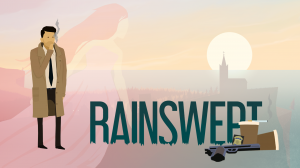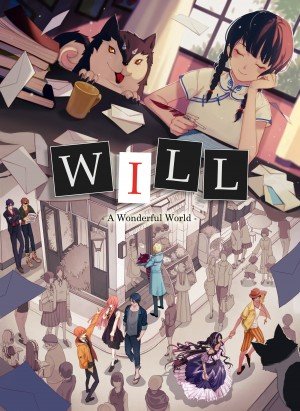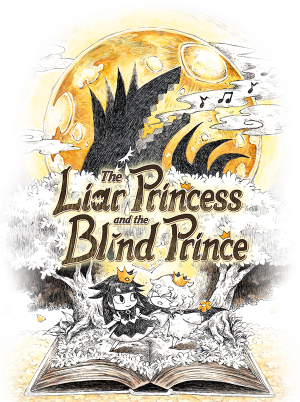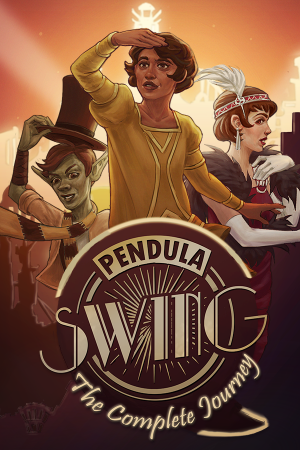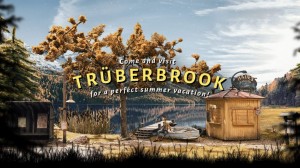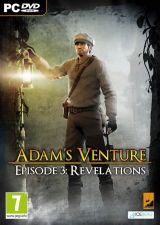Review for 3 GEEKS
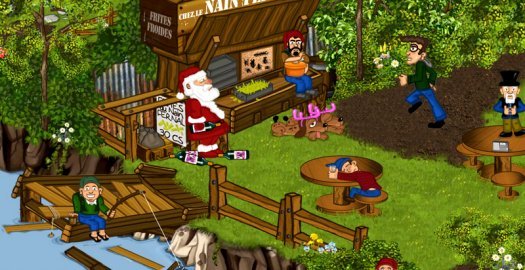
The most frustrating kind of bad game is one that shows glimmers of hope and missed greatness. That’s how it felt to play 3 GEEKS, a French point-and-click comedy adventure developed by Romuald Serrado. The game is, unsurprisingly, about three geeky friends in their quest to survive a post-apocalyptic Earth upon their return from outer space. Unfortunately, there are a slew of problems with the gameplay, presentation, and writing, including the biggest offender by far: a hopelessly broken translation. It’s a shame, too, because without all these issues, a wacky premise, some fun puzzles, and varied locations to explore tease an experience that could have been truly enjoyable.
3 GEEKS has a total of four chapters, with the first offering a short tutorial and setting the stage for the main story. There is also a ten-minute prequel cinematic that can be played from the main menu (nondescriptly labeled “bonus”) that gives some context on who the main characters are and why the start of the game has them escaping from a mental hospital. The other three chapters each focus on one of the main characters, who all have their individual stories that end up contributing to the overarching plot.
The three geeks are Roldolphe Wallace, Cyprien Karanoff, and Luc Vega, all neurotic and socially dysfunctional individuals who become friends when, entirely by chance, they are sent to the same asylum somewhere in France on the same day. Together they decide to escape by posing as astronauts, but are mistaken by NASA to be the real crew of the soon-to-be-launched Spiknout 1 shuttle and are blasted into space. While this is happening, somewhere far from the city, the goat belonging to a disgruntled environmentalist named Nathanael chokes on a littered tin can and dies, at which point Nathanael takes revenge against humanity by promptly by setting off multiple nuclear bombs around the globe. From there the story is about the protagonists returning to Earth five years later and trying to live a decent life in the planet’s new society.
The bizarre set-up is an interesting one, but unfortunately the English dialogue and character interactions leave a lot to be desired, as what might once have been snappy one-liners and clever puns fall flat when translated from their original French. There is a very faint feeling of dread that lingers throughout the adventure, which makes sense given the post-apocalypse setting, but the overall tone is meant to be amusing, even if the jokes themselves don’t land most of the time. The comedic style is reminiscent of television shows like The Big Bang Theory, though with much more awkward punchlines. The writing itself can be partly described as ‘French humour’, involving a lot of crass jokes that involve sex, drinking, big-breasted women, and the occasional poop joke thrown into the mix as well. The script’s other notable crutch comes in the form of pop culture jokes that span different fan favourites like Star Wars, the Deadpool films, and a hearty love for the classic television show MacGyver (here called Marc Gaver), along with many more. The problem is that many of these are no longer trendy but rather already a few years behind the curve.
As for the actual characters, the trio live up to their labels as geeks, as they are all smart to some degree, are socially inept – especially when talking to women – and enjoy nerdy pastimes like watching old TV shows and playing video games. An intriguing but somewhat concerning part is that they each have a mental neurosis or fixation. The most controversial one is Roldolphe, who is an engineer with bi-polar/schizophrenic tendencies, a serious mental issue that is treated very lightly and is even the butt of a couple jokes. Cyprien’s deal is that he’s good with chemistry and is a germaphobe who needs 25 bottles of hand sanitizer for a single month, while Luc has short term memory loss and is handy with computers. Strangely, outside of a small handful of scenes, these quirks never come into play, which seems like a missed opportunity to incorporate them into some interesting puzzles based on their eccentricities.
Among the supporting cast, there are unique characters found within each chapter, and a few that are recurring. Some of the regular NPCs include an alcoholic named Perno L, who is dressed as Santa Claus; a psychopath named Dexter (surely another reference to the show about a serial killer of the same name), and a nameless incompetent security guard who later becomes an incompetent farmer. While there are many others scattered throughout the world, none really stand out, either because the horrendous translation makes it hard to get a solid grasp on their personalities, or because some are just there to serve as a quest giver or say something snappy, never to be seen again once you move on.
The graphics immediately stand out, but not for the right reasons. Presented largely in a 2D cartoon style, the art itself itself is downright ugly to look at sometimes, featuring choppy animations, a saturated colour palette, off-putting character designs, and realistic backgrounds elements that have been fed through a Photoshop filter, which makes the whole thing an eye-sore when playing for too long. It’s reminiscent of mid-quality, early-2000s Flash games. Some items are just pictures of real objects, which comes off as lazy. Not every independent creator can be a great artist, but at least the chosen style should be consistent throughout. Even if it isn’t pretty to look at, it would still be preferable to the mish-mash of visuals displayed here.
All four chapters have their own main locations that span multiple places to explore, consisting of the mental hospital, a wooded cabin area, a futuristic multi-storied building that holds its visitors and employees prisoner, and finally a slapdash desert town located on the surface of a scorched Earth. The backdrops are the best part of the aesthetic, but that doesn’t mean they’re pleasing to look at by any means. There are times when they feel too cluttered, which can be hard to navigate through, and other times when they’re simply so boring in design that it’s uninteresting to sift through them looking for items and clues. At least each screen represents its own unique area, which helps minimize backtracking.
The soundtrack choices in 3 GEEKS are just as inconsistent. There isn’t one genre of music the game sticks to, leading to different areas having wildly varying tracks that can go from jovial to funky to even haunting at points. However, the individual tracks are at least tonally appropriate to their corresponding areas: the wooded area is more upbeat, while the high-tech tower has a more sinister song playing. The sound effects are marginally better, as at least they do manage to be consistent. All effects are cartoony enough to be satisfying, such as when you hear a gun go off or make something explode. They do seem a little louder than the music at points, but it isn’t noticeable most of the time, which is good because the game has only one master volume slider in the menu. There is no voice acting, but don't hurry through the mangled subtitles or you might miss an important clue needed to continue later. (Though if you do, luckily most of the conversations can be repeated.)
There’s an optional tutorial at the start of the game, but the system itself isn’t at all complicated. The interface is simple point-and-click: everything is done using the left mouse button, from moving your geek around, talking to NPCs, picking up items and combining them or using them in the environment. Exploration goes back and forth between faux-3D isometric screens and side-scrolling areas where you can only move left or right, but both function the exact same way in terms of mechanics. Unfortunately, the protagonists' fairly slow walk speed quickly makes backtracking tedious. A journal automatically updates with mission objectives, which is helpful – or should be. The actual journal screen still appears in French, but clicking on an objective brings up the English version in a text box. Of course, it suffers from the same janky translation that plagues the script, so it can be tough to decrypt. A couple of menu options aren’t translated either, leaving a mix of English and French, though this oversight shouldn’t cause any major confusion in context.
The gameplay itself ranges from manageable to infuriating, with most of the puzzles boiling down to the tried and true inventory-based variety. There never seems to be a need for huge leaps in logic as to what objects to combine, as the geeks might say something noteworthy when picking up an item, or when they come across an obstacle they’ll comment on what is needed to continue. Beware, though, that with the rough English translation, sometimes clues and objectives are worded in such a way that knowing where to go next often involves talking to the same person multiple times just to get a gist of what they’re saying. On the bright side, some of the solutions do end up being funny, with an almost Saturday morning cartoon charm that’s satisfying to see play out in the geeks’ favour.
I expected the protagonists’ mental disorders to play a major part, but Roldolphe never has conflicting or bi-polar feelings about what he does. Cyprien does on occasion refuse to pick something up if it looks nasty, but most of the time still does what he needs to continue the story, while Luc has some forgetful moments but remembers almost everything he needs to do for the sake of finishing his chapter. Another notable complaint correlates with the game being a visual mess: pixel hunting. There are a few frustrating moments where the items needed are so small that even with a smart cursor and hotspot labels it’s easy to get stuck. In one case both the tiny item and its background are shades of the same colour, effectively camouflaging the object required. The other, more egregious example is when Cyprien needs to find ants as part of a puzzle, which appear as literal black pixels on the floor.
The game isn’t demanding to run hardware-wise, but it’s not without a few technical problems. When starting from Steam, the message that is meant to disappear glitches and freezes in place, though this can easily be fixed by simply opening the Steam overlay for a second and closing it. Same goes for when you take a screenshot, which can be corrected the same way. I didn’t encounter any other graphical issues during the five hours I spent playing, but after watching the prequel cinematic the game crashed on me. Quitting and reopening it fixed this issue, thankfully. There’s a configuration menu when starting up that allows for more advanced settings, so a tip for those playing for the first time and think the graphics look weirdly stretched and jagged: change the scaling method to ‘linear interpolation’.
Overall, 3 GEEKS is a game that sadly fails to deliver on the obvious promise and ambition behind it. It has an interesting set-up, and even some creative ideas for the standard item-combination puzzles. However, with its inconsistent art style, occasionally hair-pulling pixel hunting, a few technical glitches, and of course the broken English translation of a script that doesn’t seem that funny to begin with, this isn’t a game I can recommended. It may well be more enjoyable in its native tongue, but for English-speaking adventure fans, you’ll want to look elsewhere for your next quirky point-and-click comedy.










